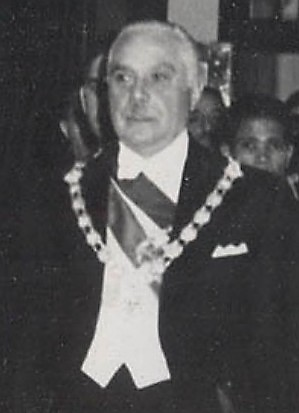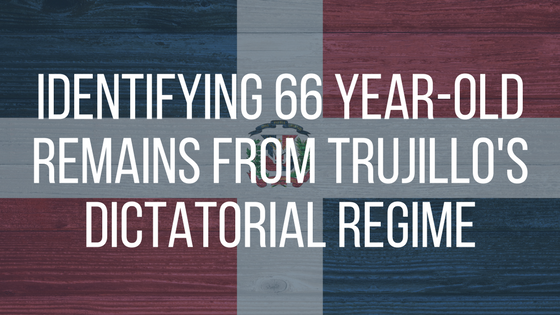The Dominican Republic is a country in the West Indies that occupies the eastern two-thirds of Hispaniola. It is the second largest island of the Greater Antilles chain in the Caribbean Sea, sharing the island with Haiti. It is also known for one of the cruelest dictators in history; General Rafael Leonidas Trujillo.
Submitted by: Eileen Riego Trejo (Laboratorio Clínico de REFERENCIA Relationship Testing Manager
General Rafael Leonidas Trujillo (1891-1961), having been trained by U.S. Marines in 1918 and elevated to commander in chief of the National Army by 1927, assumed control of the Dominican Republic in 1930. For 31 years he ruled over the country with great authority and brutality, until he was killed by his opponents in May of 1961. Reports indicate that although not directly involved in his murder, the Central Intelligence Agency (CIA) supplied the weapons that were used in the assault that led to his death. The time of Trujillo’s rule has come to be known as the “Era of Trujillo”.
 Trujillo is known for his oppressive government and his own enrichment (especially of his family), and of his military through his ownership of the main industries in the country. He used “calieses“, to keep a close eye on the environment in the whole country and denounce his enemies. He also had a very frightening military intelligence service called SIM (Servicio de Inteligencia Militar). Anyone that opposed him was denounced and taken as prisoner. Most of the captives were tortured and killed. He put a terror policy into practice and a special prison called “La Cuarenta” (40), where horrible tortures took place. Some of his prisoners just disappeared and were secretly killed, but others were killed and their bodies left in visible places, including hanging in trees.
Trujillo is known for his oppressive government and his own enrichment (especially of his family), and of his military through his ownership of the main industries in the country. He used “calieses“, to keep a close eye on the environment in the whole country and denounce his enemies. He also had a very frightening military intelligence service called SIM (Servicio de Inteligencia Militar). Anyone that opposed him was denounced and taken as prisoner. Most of the captives were tortured and killed. He put a terror policy into practice and a special prison called “La Cuarenta” (40), where horrible tortures took place. Some of his prisoners just disappeared and were secretly killed, but others were killed and their bodies left in visible places, including hanging in trees.
Although Trujillo is known for his terror administration, he reduced foreign debt so that the dollar and the peso (Dominican currency) were equivalent. He fostered greater economic prosperity for the Dominican people than his predecessors, and increased the general standard of living for the Dominicans. There was greater development in the Dominican Republic during his regime, since Trujillo ordered the construction of new roads, schools, and hospitals.
During the time he governed the country, many secret rebel groups were formed with the intention of overthrowing him. On June 18, 1949, a seaplane with 15 such rebels commanded by Horacio Ornes (a Domincan), flew from Guatemala to the Dominican Republic with intentions to overthrow Trujillo. Among the rebels were some Central Americans and three North American pilots: Herbert Maroot, John M. Chewing, and George Scruggs. This was the first international expedition lead by exiled Dominicans to overthrow Rafael Trujillo’s dictatorship.
These men had thought that they’d be supported by two planes carrying 300 men that had arrived previously, but the support planes had been forced to land in Mexico where they were detained. When the rebel seaplane arrived at Luperon bay in the Dominican Republic, it was shot down by the Dominican army. Ten men died, and the five that had survived were imprisoned.
In 1949, 15 men tried to overthrow a ruthless Dominican dictator. 66 years later, their remains were identified. Share on X
It was in September of 2015, 66 years later, that the skeletal remains of two men were exhumed from Luperon. On October, 2015, I received a call from Museo Memorial de la Resistencia Dominicana explaining their interest that REFERENCIA Laboratorio Clínico, Relationship Testing by DNA Department, identify the two skeletal remains that had been exhumed. DNA analysis identified the remains as two of the men who had participated in the failed attempt to overthrow Trujillo: George Scruggs and Alejandro Selva (Nicaraguan) by comparing them to a living son of George Scruggs, who came to the lab, and from whom we collected buccal swabs.
In order to extract the DNA from these 66 year-old bones, I developed a protocol in REFERENCIA Laboratorio Clinico using magnetic particles and then amplified with 2 multiplex STR systems: PowerPlex®21 and AmpFlSTR® NGMSElect. Using STR markers, and the Paternity Test, and representing, Laboratorio Clínico de REFERENCIA, I could identify one of the two skeletal remains as belonging to the probable biological father. The Total Paternity Index (Combined Autosomal Index by the Y Haplotype Index) was 895050 with a Probability of Paternity of 99.9998 %.
My key collaborators were Luisa De Peña Díaz, General Director of Museo Memorial De la Resistencia Dominicana (MMRD), Clevy Tavares (MMRD Pathology), Ileana Ornes (MMRD Colaborator), Dairis Morillo (Laboratorio Clínico de REFERENCIA Relationship Testing Technical Analyst), and Myrna Ornes de Podestá (Laboratorio Clínico de REFERENCIA Relationship Testing Supervisor).
You May Also Like:
- Discovering the Truth About the Dozier School for Boys
- Identifying the Disappeared of Guatemala
- Autosomal & Y-STR Analysis of Degraded DNA from the 120 Year-Old Skeletal Remains of Ezekiel Harper
I became interested in this work because of its importance for Dominican history. To discover the truth regarding all the events that happened and the people involved represents an advance in a better knowledge of that dark era. At the same time, we can learn about the enormous struggles, bravery, sacrifices, abuse, and mistreatment these heroes went through.
I was very pleased by my poster’s reception at ISHI! I ran out of all the copies I prepared for the attendees to read and take with them.
- First because the skeletal remains were 66-years old, and were buried directly in the ground, where DNA degradation occurs due to the conditions of hot temperature, UV rays, and humidity.
- Second, because people like to know about the history of other countries.
- Third, and last of all, because this investigation uncovers facts about a very dark age, when human rights were not as relevant as today and globalization was not in an advanced stage.
This might advance the field by encouraging others to look for answers in different fields, using forensics methods.
Next for me, in representation and manager of Laboratorio Clínico de REFERENCIA, is to develop a Criminal Database for CODIS in Dominican Republic by identify the genetic profiles of the prisoners in the different jails or different countries.
WOULD YOU LIKE TO SEE MORE ARTICLES LIKE THIS? SUBSCRIBE TO THE ISHI BLOG BELOW!


